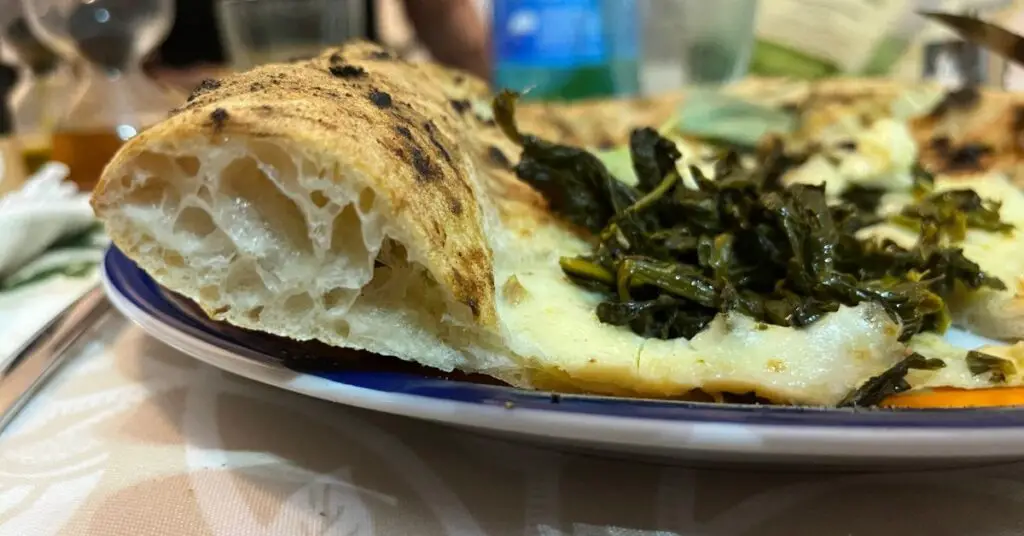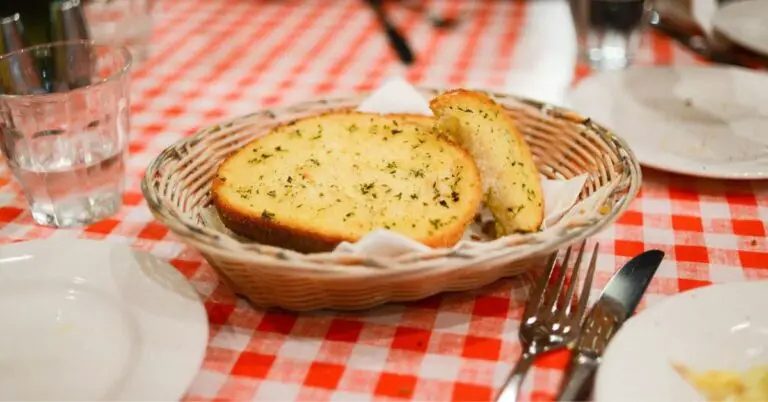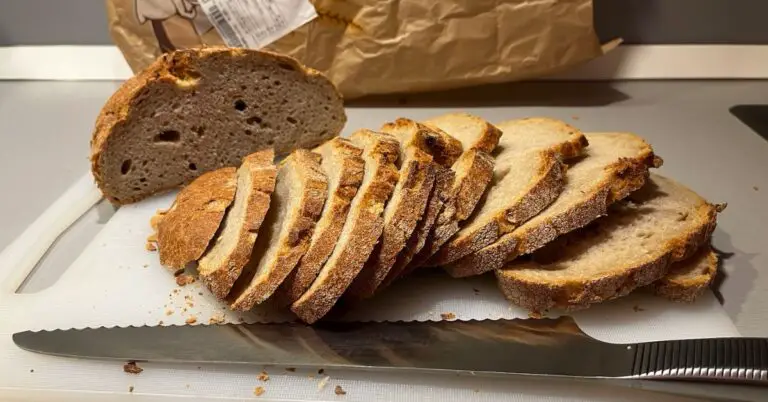Here in Italy, when people talk about pizza, they often mean Pizza Napoletana. Master pizza makers who want to complete a Neapolitan pizza must meet precise requirements and thickness as we will see is one of them, ranging from the choice of raw materials to the methods of processing, leavening, and baking.
Traditional Neapolitan Pizza originally can be of two types:
- pizza Marinara with tomato, oil, oregano, and garlic
- pizza Margherita with tomato, oil, mozzarella cheese, grated cheese, and basil.
All other types of pizza with different toppings came later and use the base of Neapolitan pizza to create different pizzas.
Now that you understand what we are talking about let’s get to the heart of the matter, today we are talking about pizza height, since doubts about whether Neapolitan pizza is thick or thin are common, in this post I will explain everything.
Should Neapolitan pizza be thick or thin?
True Neapolitan pizza is round, with a variable diameter that should not exceed 35 cm, and with a raised edge, the crust, the so-called “cornicione,” instead of the central part of the pizza that is always soft and moist, rich in toppings.
So the real Neapolitan pizza is high on the edges but very thin in its central part, it was born as a popular quick meal, in fact, it is easily folded like a book so that its characteristic flavor can be enjoyed while standing and walking.

It is cooked in typical wood-fired ovens, which reach a temperature of nearly 500 degrees, and the cooking time is in fact very short, from 60-90 seconds at most. With these timings, if it were thick, it would not bake in time, would it?
How thin should Neapolitan pizza be in the center?
The whole world knows the goodness of pizza but only a few people know that Italian pizza, to be considered a True Neapolitan Pizza, must comply with precise rules.
One of these requirement has to do with thickness; we have already mentioned that it has to be thin, but how thin to be considered a proper pizza?
The central part of the pizza (that is, the whole pizza except the crust) must be about 0.25 cm (0.099 inches) thick.
In this central part the red of the tomato, perfectly matched with the oil, the white of the mozzarella, the green of the basil leaves, and the other chosen toppings will stand out.
Does Italian pizza have a thin or thick crust?
Although the central part should be very thin, the real Pizza Napoletana has a thick crust, the so-called “cornicione”, it swells and rises thanks to the air that is incorporated into it during the processing of the dough.
What height characterizes the crust? It should be about 1-2 cm high (0.39-0.78 inch), regular, puffy, light, with the typical appearance and taste of well-leavened and well-baked bread. In jargon, a” cornicione” or “crosta” with these characteristics is also called “well alveolate.”

Can Neapolitan pizza have a filled crust?
The crust, or “cornicione”, can also be stuffed in some quite gourmet variants, although this feature is far from classic pizza, it is still common to find the option of ordering a pizza with a stuffed crust.
The crust is often stuffed with ricotta cheese, or even mozzarella, tomato or even sausage, and other yummy ingredients!
It is important to remember that pizza is preferably topped with ingredients of Campania origin (south Italy). Let’s start with the peeled tomato, which is broken by hand, and then the mozzarella spread evenly over the pizza.
Basil is used fresh and leafy. And finally, the finishing touch of extra virgin olive oil is added in a spiral motion, raw, when the cooking is finished.
In recent years, pizza makers have indulged in coming up with imaginative toppings. However, it is necessary to respect the basic rules of combining ingredients to always achieve a harmonious, balanced and tasty result.
Is Neapolitan pizza soft in the middle?
The typical Neapolitan pizza is round and thin. But how is its texture in the middle?
The classic Neapolitan pizza is springy and soft in the middle. Being made of a very soft dough, on average composed of 70 % water, where the classic ingredients that often contribute to moistening the dough will find their place.
This is why Neapolitan pizza is soft in the center and in lifting a slice it will fold and run, in fact, it is normal to help yourself with your hands by folding it or even using a fork and knife.
Let’s say that compared to American pizza, which instead is often tall, doughy, and crispy, Neapolitan pizza is much softer and more elastic.
What makes Neapolitan pizza dough different?
Neapolitan pizza dough is so special because it is made only with water, salt, yeast, and flour and is allowed to rise for a minimum of 8 hours.
So many aspects impact the quality, flavor, and digestibility of the pizza. The first aspect is the preparation of the dough.
To roll out the dough of the real Pizza Napoletana, the pizza maker will never use a rolling pin but with the movement of his hands from the center outward, he will shape the pizza.
As we have already mentioned, the central thickness should not exceed 0.25 cm (0.099 inches) thick and the edge crust 1-2 cm high (0.39-0.78 inch).
The leavening stage is also crucial, which is almost always done at room temperature with doses of yeast related to the hours the dough has matured, and times can vary from 8 to 24 hours.
The shape and weight of the buns, the spreading of the pizza dough pie, and the ingredients used for toppings also affect the quality of the pizza. Ad you understand now, many rules must be followed for a pizza to be considered a true Pizza Napoletana, thinness and elasticity of the central part is one of them.



![Do Italians really Soak Bread in Wine? [Also cookies]](https://whyitalians.com/wp-content/uploads/2022/08/dipping-bread-in-wine-768x402.jpg)

![Italians love Frozen Pizza!? [here’s what is happening]](https://whyitalians.com/wp-content/uploads/2023/03/frozen-pizza-box-768x402.jpg)

